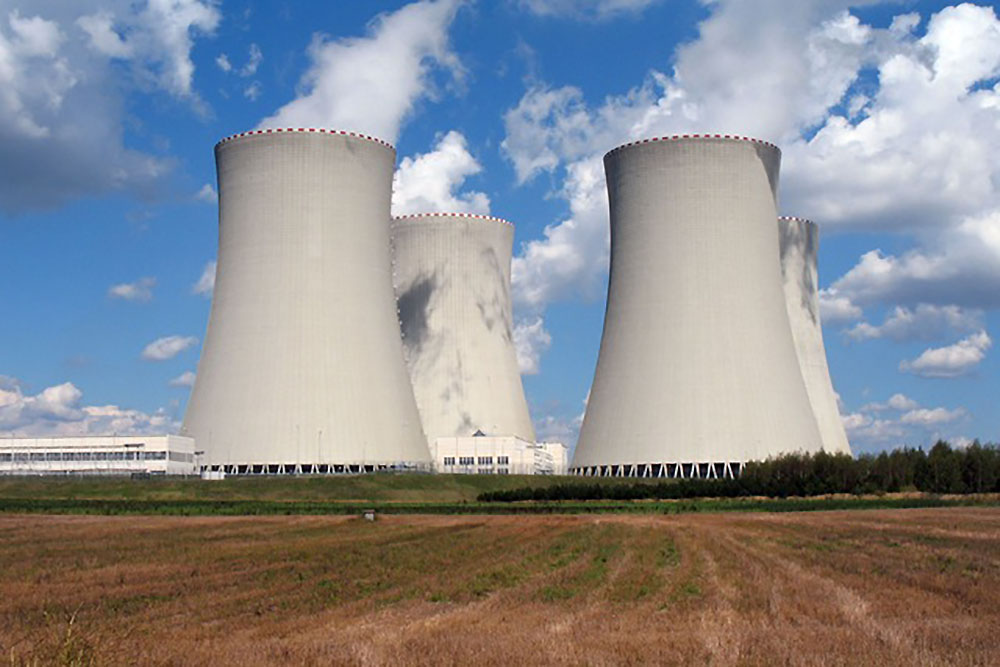Assessing Natural Hazard Risks to Nuclear Facilities
Safe operation of nuclear plants and other complex systems depends on being able to anticipate and mitigate internal points of failure, from broken pipes to clogged water pumps. Probabilistic Risk Assessments (PRA), long used in assessing and managing these kinds of risks, can also be applied to external hazards, such as floods or earthquakes—however, uncertainties associated with such events must first be addressed. University of Maryland (UMD) assistant professor Michelle (Shelby) Bensi is heading up a project that aims to reduce the levels of uncertainty, making PRAs a more effective tool for managing threats posed by nature. Bensi, a faculty member in the civil and environmental engineering department at UMD’s A. James Clark School of Engineering, is Principal Investigator (PI) on a recently-awarded, nearly $800,000 grant from the U.S. Department of Energy’s (DOE) Nuclear Energy University Program (NEUP). The team includes multiple researchers and engineers from UMD, Virginia Commonwealth University, Idaho National Lab, and Westinghouse Electric Company.
In a PRA, mathematical models are used to quantify the likelihood of a particular hazard or event —for instance, the odds that a component will fail at some point during a given time period—as well as the magnitude of consequences associated with the event. In an airplane, for example, the failure of a sensor that provides safety-critical information can lead to catastrophic results. In the nuclear industry, PRAs have been used for decades in order to help operators gauge the kinds of problems that may occur, and the potential safety implications. “The nuclear industry is one of the pioneers of probabilistic risk assessment,” Bensi said. “The approach is now being used in many different fields, from oil and gas to the space industry.” In the beginning, Bensi said, the focus was mainly on internal problems, such as pump failures or power outages. With PRAs having proved effective in these scenarios, the scope has expanded to include natural hazards such as earthquakes, high wind, severe precipitation, and so on. But events like these involve a new set of uncertainties, Bensi said. “When a pipe breaks, it happens suddenly. With hurricanes, by contrast, the process is slower and the way it evolves can be hard to predict. There is uncertainty about how the hazard event will affect the plant: will any of the barriers fail and allow water into the plant? If water does get in, where will it go? We also have to factor in human performance, because operators need to take actions in order to protect their plants, such as installing barriers or turning on pumps.” “Our aim is to develop strategies for dealing with all these uncertainties,” Bensi said. “And we’ll also be devising strategies for prioritizing investments in uncertainty reduction—that is, helping to show where it makes sense to spend money. Should they invest in more experiments and simulations, for instance? We’ll be providing them with a basis for making these kinds of decisions.” In addition to Bensi, the project team includes UMD mechanical engineering assistant professor and Center for Risk and Reliability Associate Director Katrina Groth, as well as Zeyun Wu (Virginia Commonwealth University), Zhegang Ma (Idaho National Laboratory), Hongbin Zhang (Idaho National Laboratory), and Ray Schneider (Westinghouse Electric Company).
Related Articles: November 13, 2020 Prev Next |
|



 “Our goal is to develop strategies that can work for a wide range of external, natural hazards, from earthquakes to floods, tornadoes, hurricane winds, or precipitation events,” Bensi said. “We want to create something that can be used effectively to understand uncertainties associated with all of these hazards.”
“Our goal is to develop strategies that can work for a wide range of external, natural hazards, from earthquakes to floods, tornadoes, hurricane winds, or precipitation events,” Bensi said. “We want to create something that can be used effectively to understand uncertainties associated with all of these hazards.”